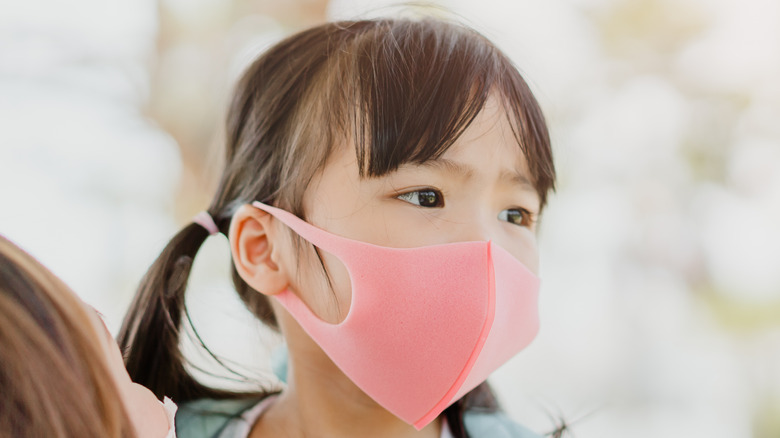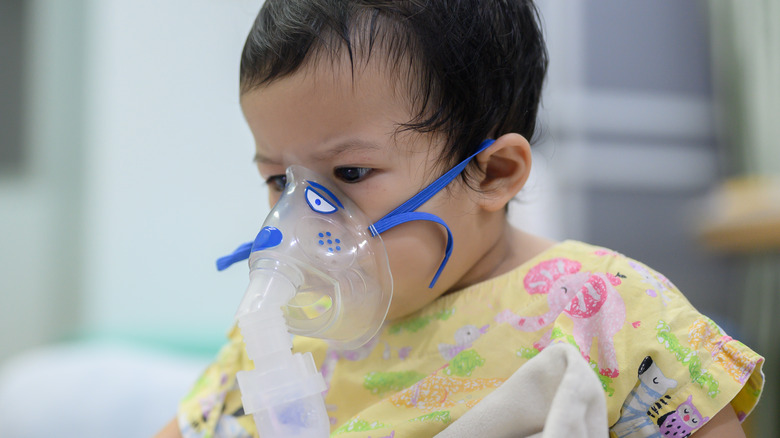How To Tell The Difference Between COVID-19 And RSV
As COVID-19 cases continue to surge across the U.S., cases of respiratory syncytial virus (RSV) are also continuing to climb, especially among young children (via Health). RSV is a highly contagious respiratory illness that causes mild symptoms, similar to those of the common cold, including runny nose, coughing, sneezing, fever, and decreased appetite. While COVID-19 has similar symptoms, they may be more severe.
RSV can be spread through infected droplets from a cough or sneeze, or from not washing your hands after touching a contaminated surface. It can also be spread through direct physical contact with someone who is infected with the virus. While most cases of RSV are mild, some can be quite severe, especially in young children and older adults. Severe cases can cause respiratory distress and may even lead to complications like bronchiolitis or pneumonia. Since COVID-19 is similar to RSV, it can be difficult to tell the difference between the two viruses. There are only a handful of symptoms of COVID-19 that may help differentiate between the two. "COVID-19 can sometimes cause vomiting, diarrhea, and a rash, which you don't see with RSV," Dr. Daniel Ganjian, a pediatrician at Providence Saint John's Health Center, told Health. Other than that, the only way to tell whether or not you have RSV or COVID-19 is to take a test.
Children can get COVID-19 and RSV at the same time
It's possible to contract COVID-19 and RSV at the same time. According to officials at Texas Children's Hospital in Houston, Texas, there have been more than 25 reported cases of children who have tested positive for both RSV and COVID-19 as of August 2021 (via Texas Tribune).
Although it is not uncommon for younger children to have more than one respiratory virus at a time, this particular combination of viruses is worrisome to health experts, who believe a double infection can worsen their symptoms and lead to more severe illness (via Healthline). "I am very worried about this issue, and we are working diligently to find out why these cases are on the rise and what we can do to slow this alarming trend," Dr. Danelle Fisher, a pediatrician and chair of pediatrics at Providence Saint John's Health Center, told Healthline. While children of all ages can contract RSV and COVID-19 at the same time, young toddlers and infants are at a much higher risk of experiencing respiratory distress than older kids.


